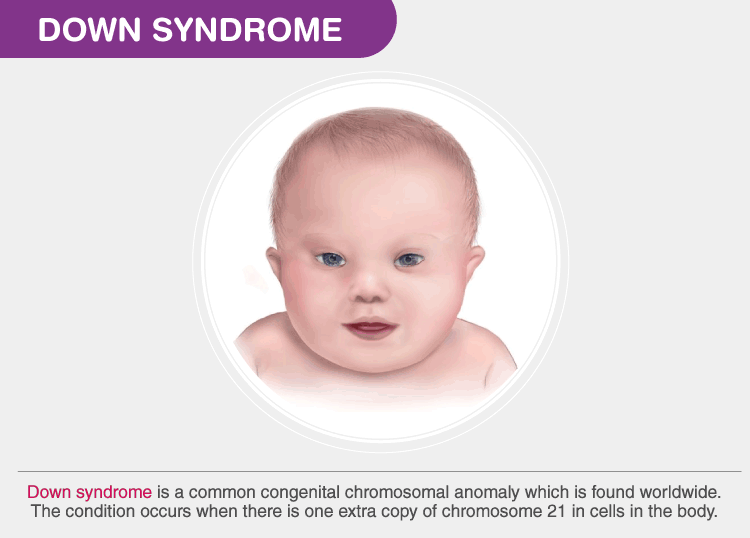Table of Contents
Down syndrome is a common congenital chromosomal anomaly that is found worldwide. The condition occurs when there is one extra copy of chromosome 21 in cells in the body. The extra chromosome 21 material may affect the physical development and learning abilities of people with Down syndrome. Down syndrome is the most common genetic cause of learning disability. Down syndrome is not a disease or an illness that can be cured.

Facts about Down Syndrome
Down syndrome was first described by Dr John Langdon Down in 1866. Down syndrome affects people of all economic, educational, cultural, ethnic and racial categories.
The chance of a baby with Down syndrome increases with the age of the mother, however, 80 per cent of babies with Down syndrome are born to 35 years old or younger women, simply because women in that age group have the most babies.
Down syndrome causes a delay in the developmental process. A person with Down syndrome can be recognised by facial features. Down syndrome often causes various degrees of cognitive impairment.
Types of Down Syndrome
- Trisomy 21, in which there is an extra copy of the 21st chromosome in all cells, is the most common type. It occurs at conception.
- Mosaic Down syndrome is not very common, in this, not all the cells have an extra 21st chromosome. It occurs after some cellular division has happened.
- Translocation Down syndrome is the rarest and the only inherited type of the syndrome, in which an extra copy of the 21st chromosome attaches to another chromosome.
Diagnosis
The presence of Down syndrome is often identified soon after birth from the baby’s clinical features and confirmed with a blood test. Sometimes babies with Down syndrome are identified during pregnancy as a result of prenatal tests.
Characteristics of Down Syndrome
- The face tends to be round and flat.
- Ears may also be small and low-set.
- The nose may be small with a flat and low bridge.
- The back of the head (called the occiput) is slightly flattened.
- Eyes slant upwards and have an extra fold of skin on the upper eyelid known as an epicanthic fold or the epicanthus. This skin fold covers the inner corner of the eye next to the nose.
- The mouth cavity is slightly smaller than average and the tongue slightly larger causing the person with Down syndrome to sometimes protrude his/her tongue.
- With speech and language therapy from an early age, tongue protrusion can be managed through exercises that strengthen the lips and tongue.
Also Read: Chromosomal Abnormalities
Stay tuned with BYJU’S to learn more about Down Syndrome.
Frequently Asked Questions on Down Syndrome
What is the main cause of Down’s syndrome?
Down’s syndrome is caused by trisomy in the 21st chromosome. So, chromosome number 21 is present in three copies. This condition is caused by abnormal cell division during the formation of the sperm or egg.
Can Down syndrome be cured?
Down syndrome cannot be cured since it is a genetic condition. Skill improvement programs like speech, occupational or educational can be given to lead a normal life.
What makes a person have a high risk of having a Down’s syndrome baby?
The risk of having is baby with down’s syndrome increases with the increased age of the mother. There is a one in 1200 chance of bearing a baby with Down syndrome for a 25-year-old woman. When the age increases to 40, the chance becomes one in 100.

Comments